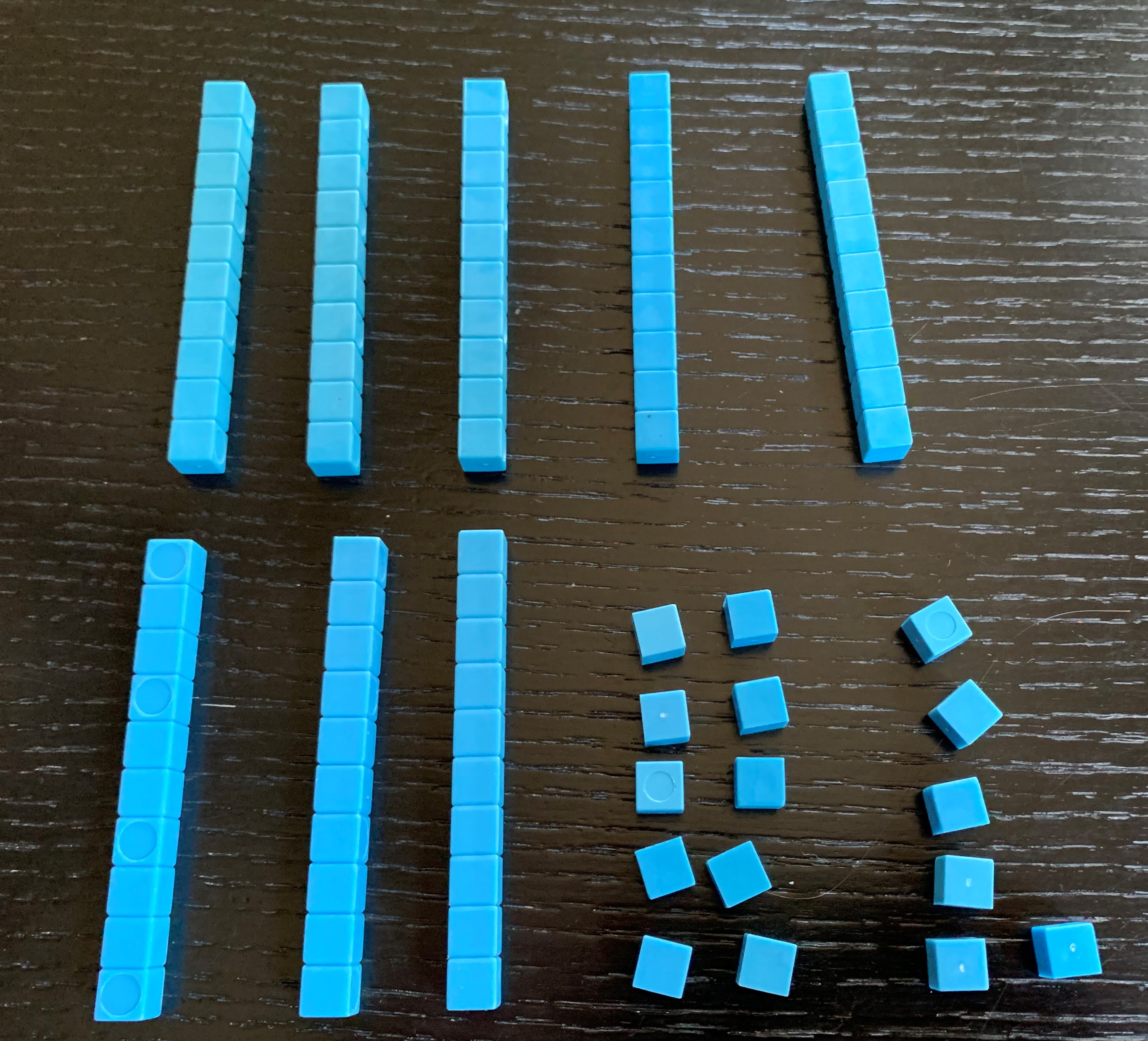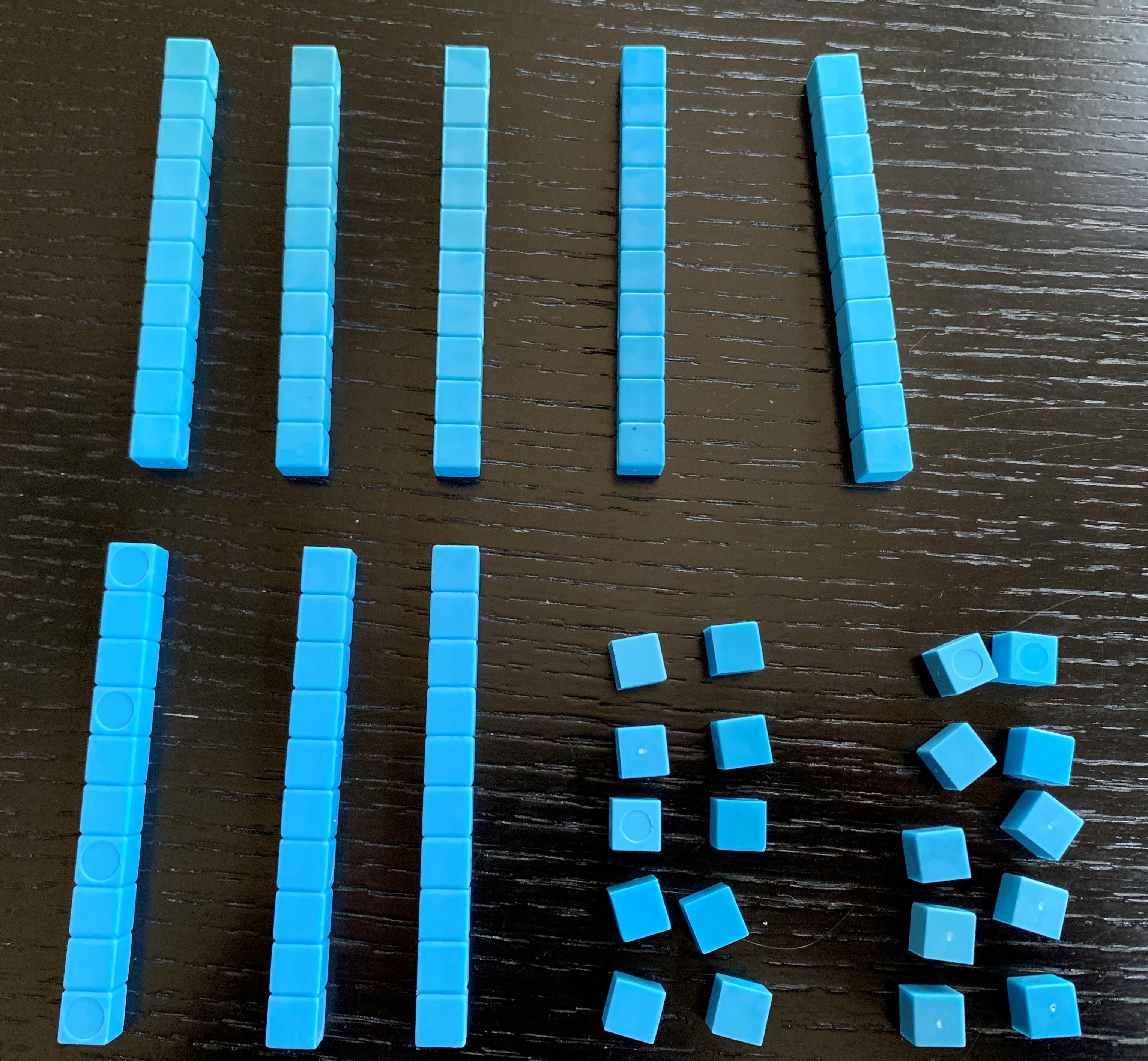Lesson 1
How Do We Compose a Hundred?
Warm-up: Choral Count: Count Beyond 100 (10 minutes)
Narrative
The purpose of this Choral Count is for students to practice counting from 90 to 120 by 1 and notice patterns in the count. In this unit, students learn to identify the value of digits, as they write three-digit numbers through 999. In grade 1, students counted beyond 100, but did not consider a hundred as a unit and did not explore the value of each digit by place through the hundreds. Students notice and describe the repeating patterns within the base-ten system (MP7, MP8).
Launch
- “Count by 1, starting at 90.”
- Record as students count. Record 10 numbers in each row. Then start a new row directly below.
- Stop counting and recording at 120.
Activity
- “What patterns do you see?”
- 1–2 minutes: quiet think time
- Record responses.
Student Response
For access, consult one of our IM Certified Partners.
Activity Synthesis
- “What is a number we could place in the fourth row? Use a pattern we discussed to explain how you know your number would belong.” (You could put 122 in the group with 92, 102, and 112. The ones place has a 2, it is getting bigger by 10, and I think the 1 should stay the same like in 102 and 112.)
Activity 1: How Do We Make a Hundred? (20 minutes)
Narrative
The purpose of this activity is to introduce students to a new unit, the hundred. Students used connecting cubes to make tens in grade 1 and used tens and ones to count to and represent numbers within 120.
In an earlier unit, students were introduced to base-ten blocks and used base-ten diagrams to represent sums and differences within 100. Students build on this understanding as they use blocks to represent a starting number (96) and add ones until they reach a total value of 100. As students discover they have 10 tens, monitor for language they use to describe the total value of the blocks and the connections they make to their previous work with ones, tens, and three-digit numbers (MP7).
Supports accessibility for: Conceptual Processing, Attention
Required Materials
Materials to Gather
Launch
- Groups of 2
- Give students access to base-ten blocks.
- Display photo of 8 tens and 16 ones.
- “Andre was using base-ten blocks to represent numbers. How many do you see? How do you see them?” (96. I see 8 tens and 16 ones. I see it as 9 tens and 6 ones.)
- 30 seconds: quiet think time
- 1 minute: partner discussion
- Share responses.
Activity
- “Work with a partner to follow along and see what Andre discovered as he adds more blocks.”
- 10 minutes: partner work time
- Monitor for students who explain that the value is 100 by:
- counting by 1 from 80 or by 1 from 96
- counting by 10
Student Facing
- How many do you see? How do you see them?

- Andre added more blocks.

- What is the value of Andre’s blocks now?
- How many tens and ones are in this number?
- Andre made the same number with the fewest amount of blocks possible. Draw a base-ten diagram to show what Andre’s number looks like now. Use your base-ten blocks to help.
Student Response
For access, consult one of our IM Certified Partners.
Advancing Student Thinking
- “Can you explain how your diagram represents Andre’s total value using the fewest number of blocks possible?”
- “Is there a way to represent the same amount without any ones?”
Activity Synthesis
- Invite previously identified students to share how they know the value of Andre’s blocks is 100.
- “If Andre used the fewest number of blocks, how many tens did he use?” (He had 10 tens.)
- “What if Andre wanted to use the greatest amount of blocks to show this number? What would he do?” (He’d decompose all the tens to use only ones. He’d use 100 ones.)
- “In this activity, you showed you know that 10 ones is the same as 1 ten. Just like 10 ones is the same as 1 ten, 10 tens is the same as 1 hundred.”
- “A hundred is a unit that is made up of 10 tens.”
Activity 2: Different Ways to See 100 (15 minutes)
Narrative
The purpose of this activity is for students to make sense of 100 when represented as 100 ones, 10 tens, or 1 unit of a hundred with base-ten blocks or base-ten diagrams. Students compare different ways to describe 100 and connect the descriptions to base-ten diagrams (MP7). Students understand that a hundred is made up of 10 tens and can also be thought of as a unit of 100 ones.
Advances: Conversing
Required Materials
Materials to Gather
Required Preparation
- Each group of 2 students needs access to at least 1 hundred block.
Launch
- Groups of 2
- Gives students access to base-ten blocks including at least 1 block that represents 100.
- “In the last activity, we saw that we can use 10 tens to represent 100.”
- “There is a base-ten block that represents the unit of a hundred.”
- Display a tens block.
- “We use this block to represent a ten.”
- Display a hundred block.
- “We can use this block to represent a hundred.”
Activity
- “In this activity, think about the different ways to describe 100 and match the students to their diagrams.”
- 5 minutes: independent work time
- “Share your matches with your partner and explain how you knew.”
- 3 minutes: partner discussion
- “Now use your blocks to show \(100 + 11\).”
- 2 minutes: partner work time
- Monitor for students who represent 100 with 1 hundred block and students who represent 100 with tens.
Student Facing

-
Match the diagrams to the statements. Label each diagram with A, B, or C. Be prepared to explain your matches.
- Priya said, “I see 100 ones.”
- Kiran said, “I see 10 tens.”
- Lin said, “I see 1 hundred.”
____________
____________
____________
- Represent \(100 + 11\) with blocks or a diagram.
Student Response
For access, consult one of our IM Certified Partners.
Advancing Student Thinking
- “How did you decide which statement matched each diagram?”
- “What is the same or different about these diagrams?”
Activity Synthesis
- “How did you know which diagram showed the way Lin saw the blocks?” (Lin said she saw 1 hundred, so she was thinking about the whole thing as a unit.)
- Invite previously identified students to share how they represented \(100 + 11\).
- “How could you represent the 100 in the expression with the fewest blocks?” (I could use 1 hundred block.)
Lesson Synthesis
Lesson Synthesis
“Today we learned about a unit called a hundred. Kiran, Lin, and Priya described 100 in different ways.”
Display the base-ten diagrams from the previous activity as students share to reinforce the description.
“Complete the following statements with your partner.”
Display:
“_____ ones is the same as one hundred.”
“_____ tens is the same as one hundred.”
Share and record responses.
Cool-down: Fewer Blocks (5 minutes)
Cool-Down
For access, consult one of our IM Certified Partners.


